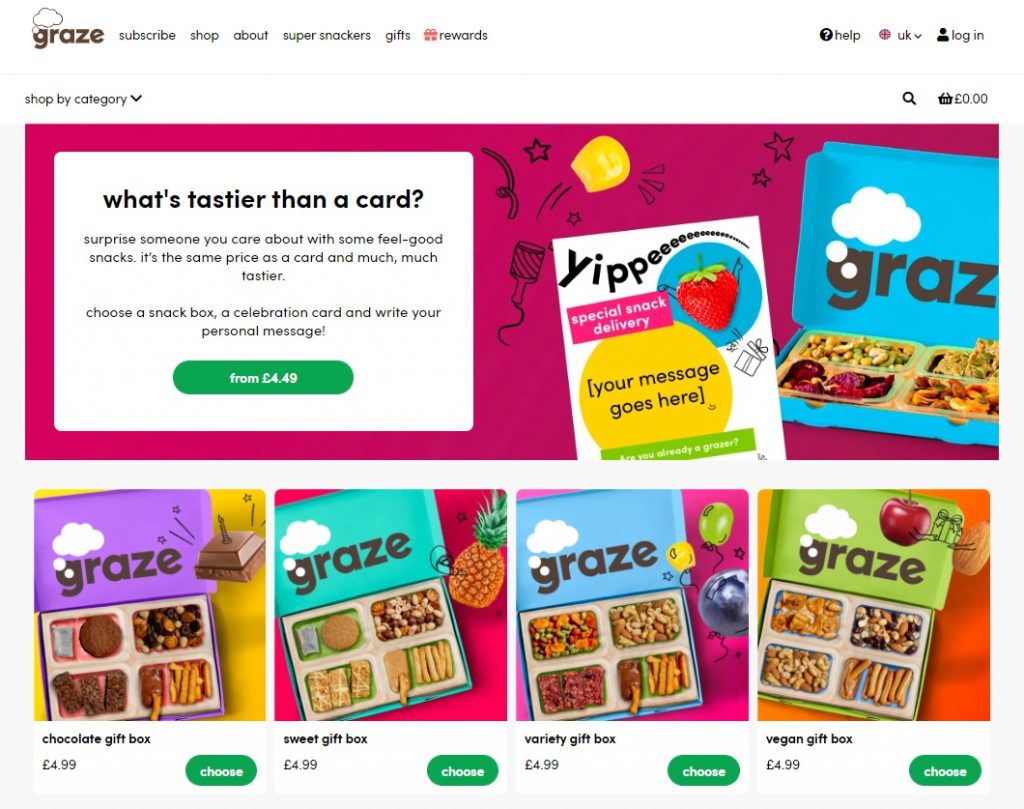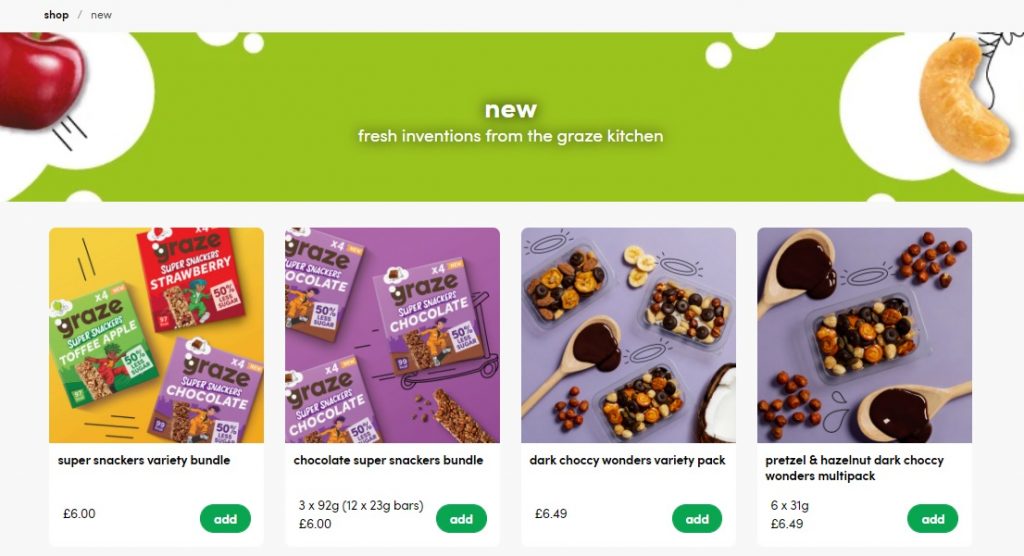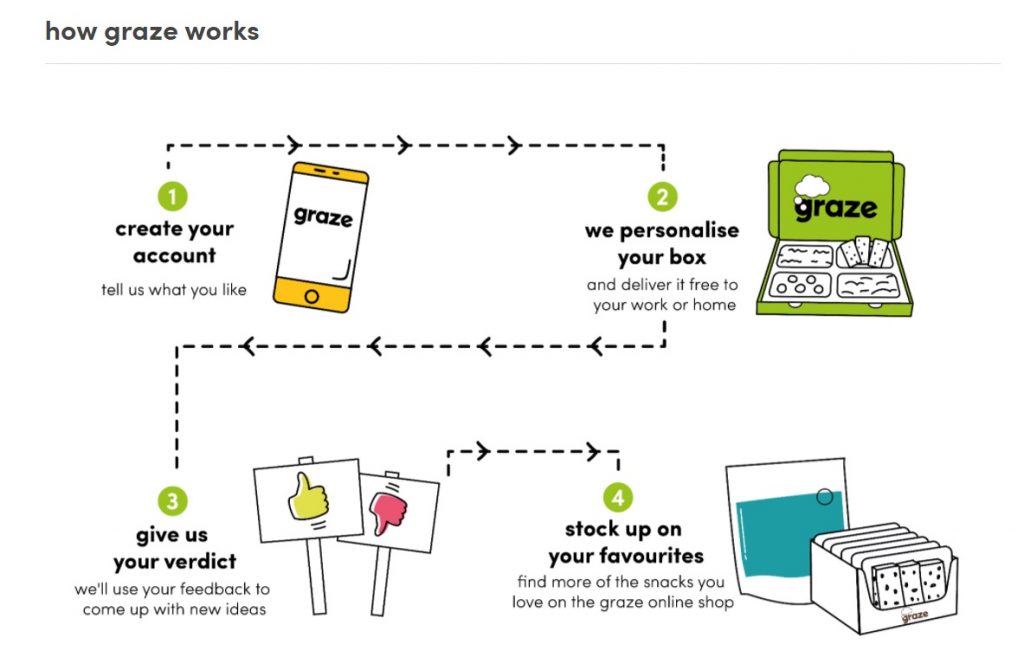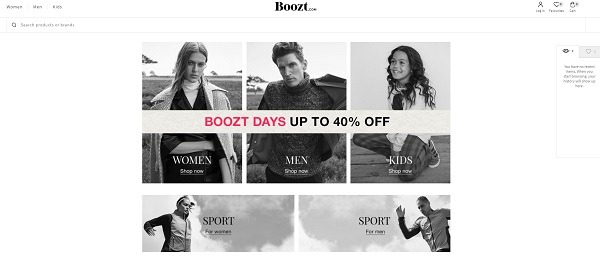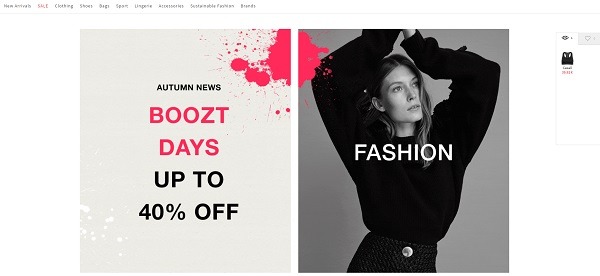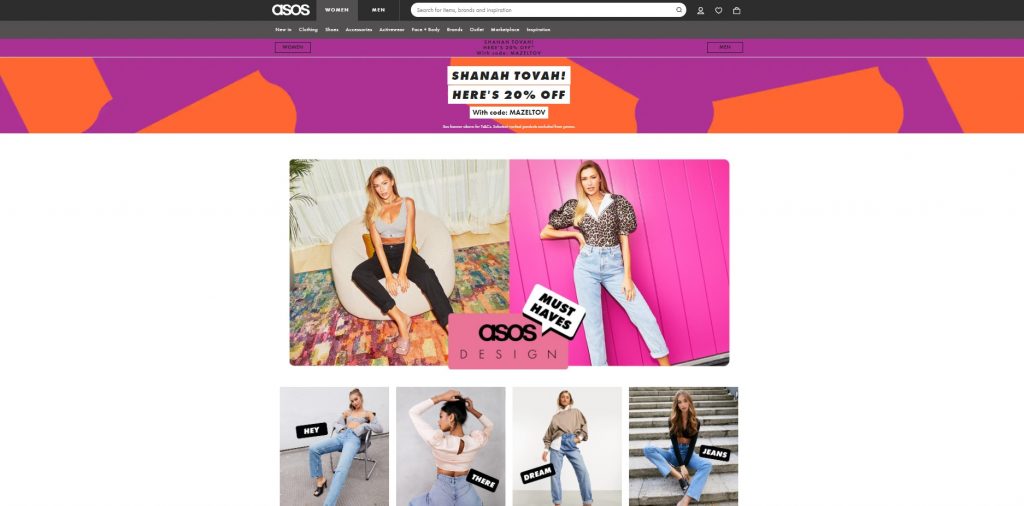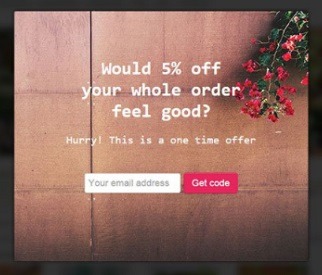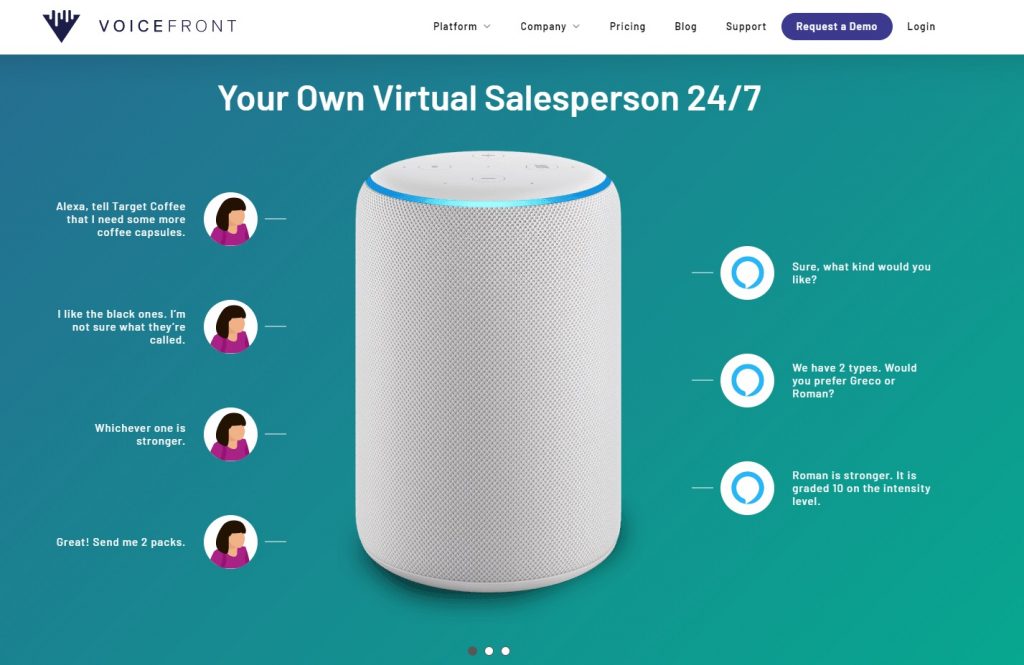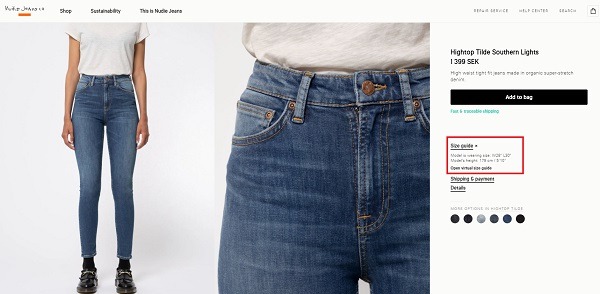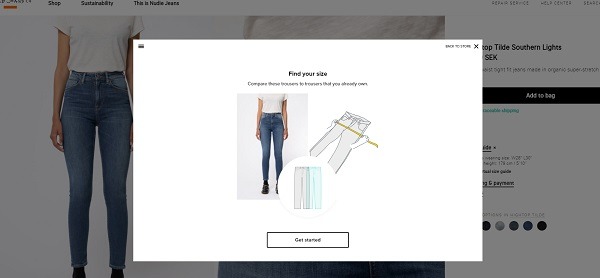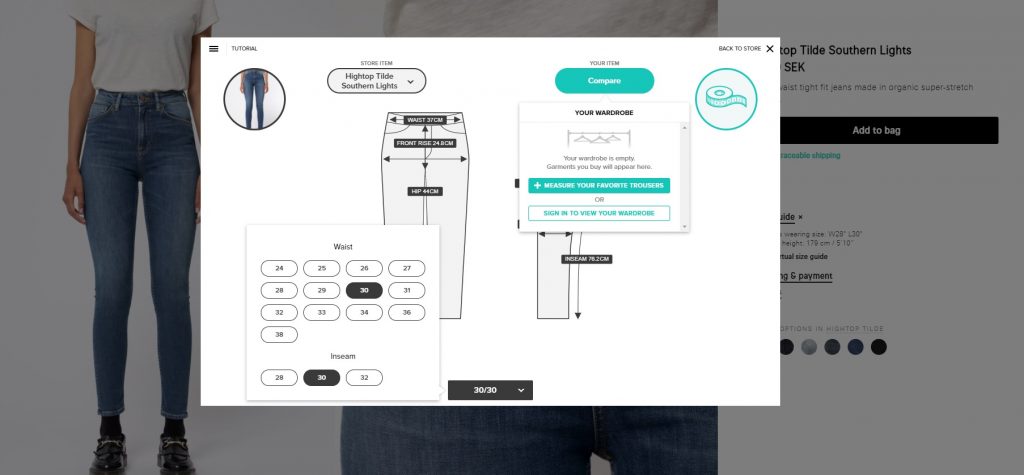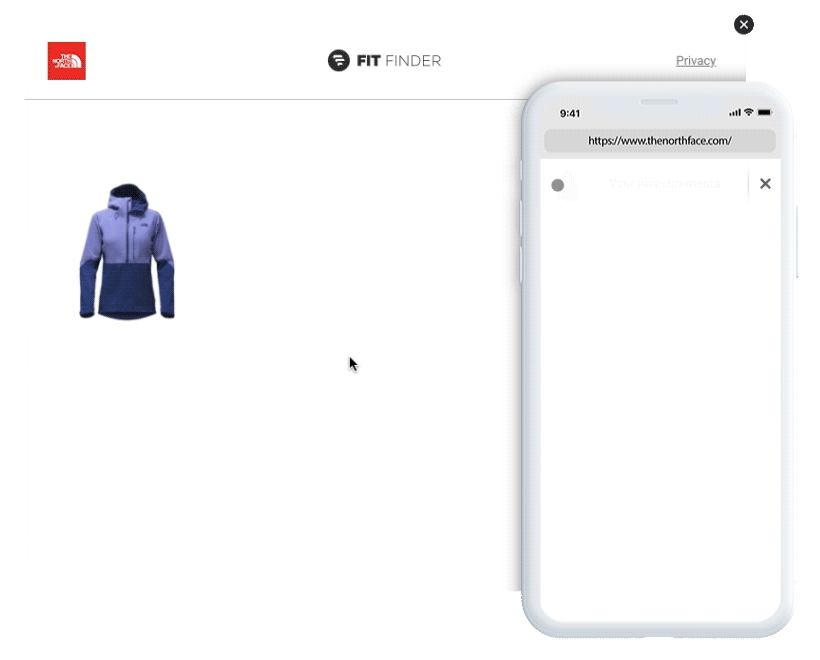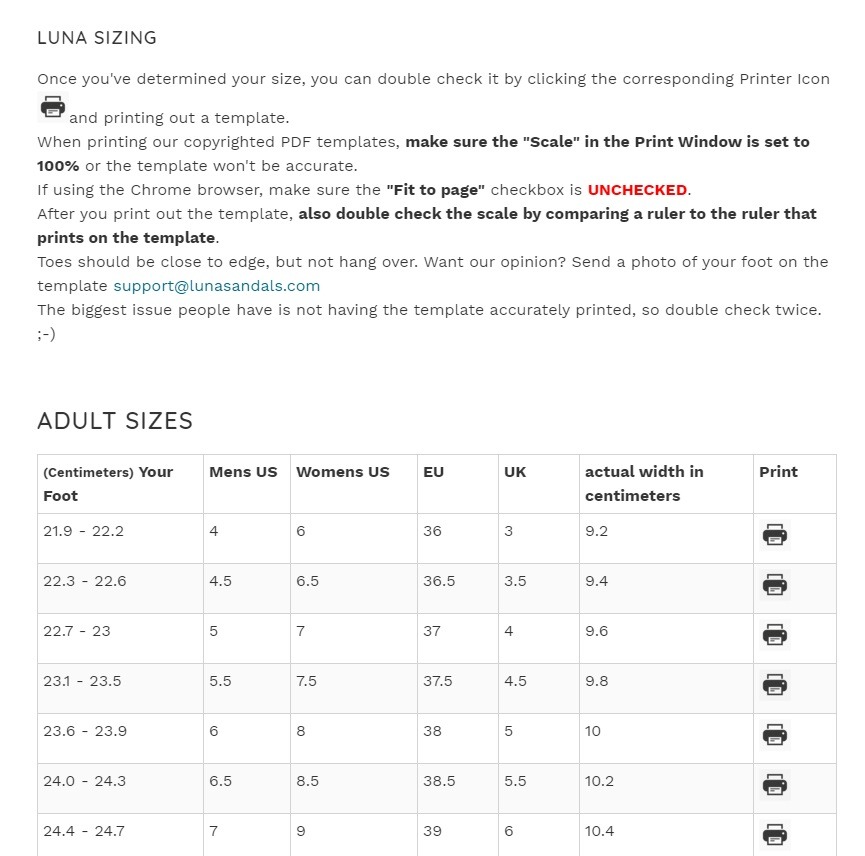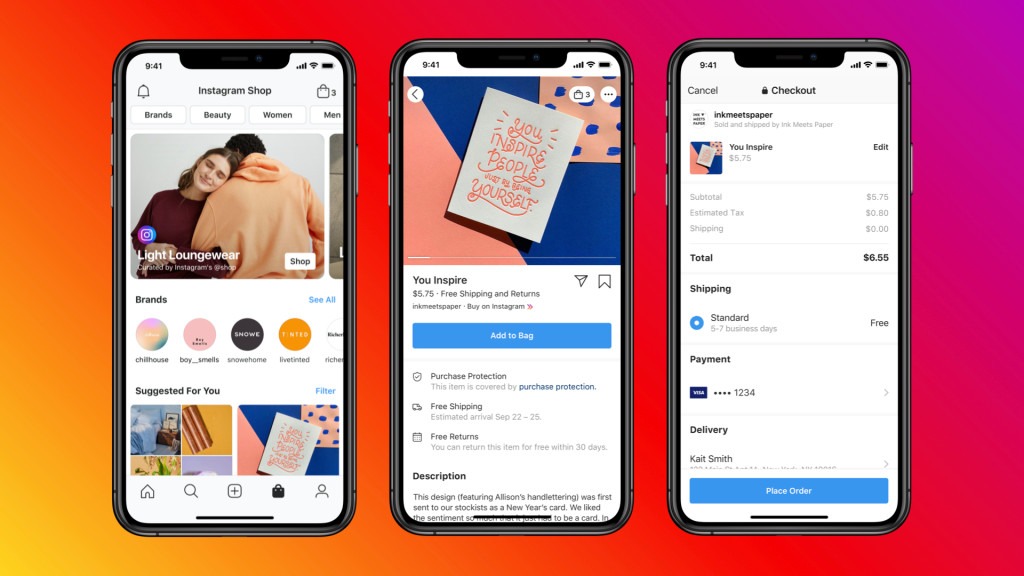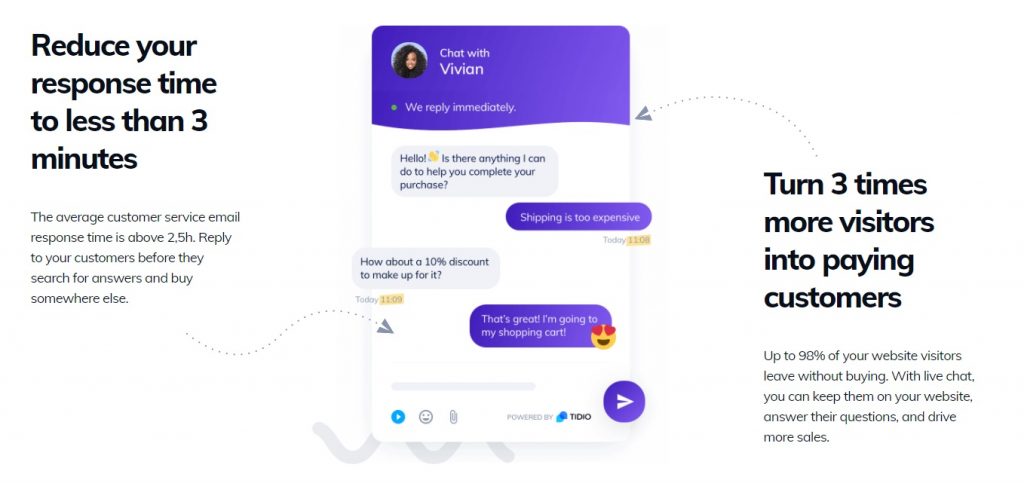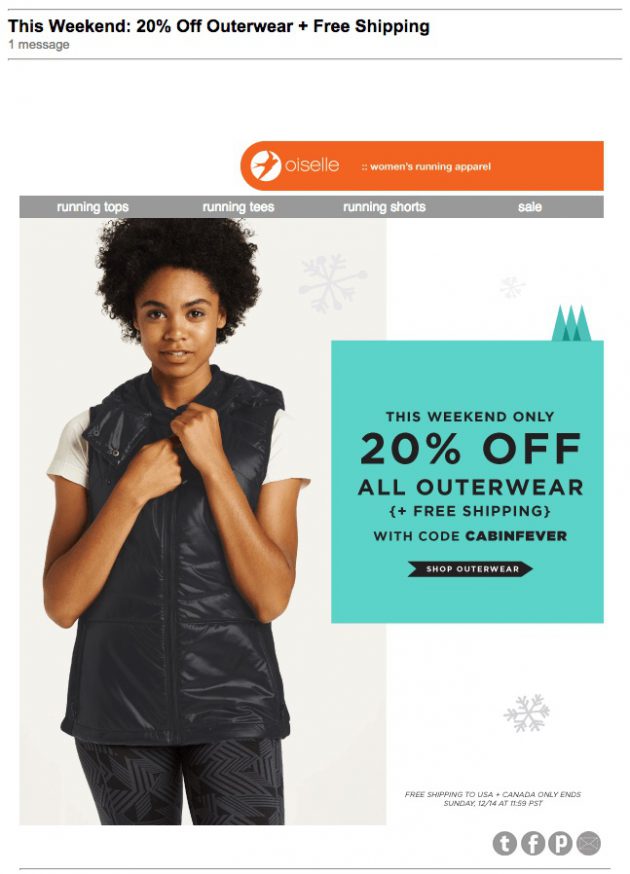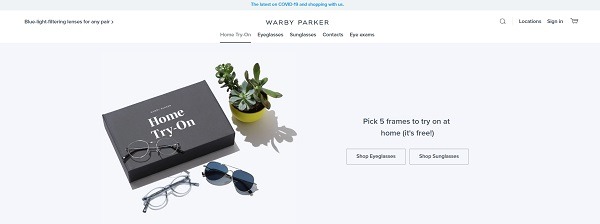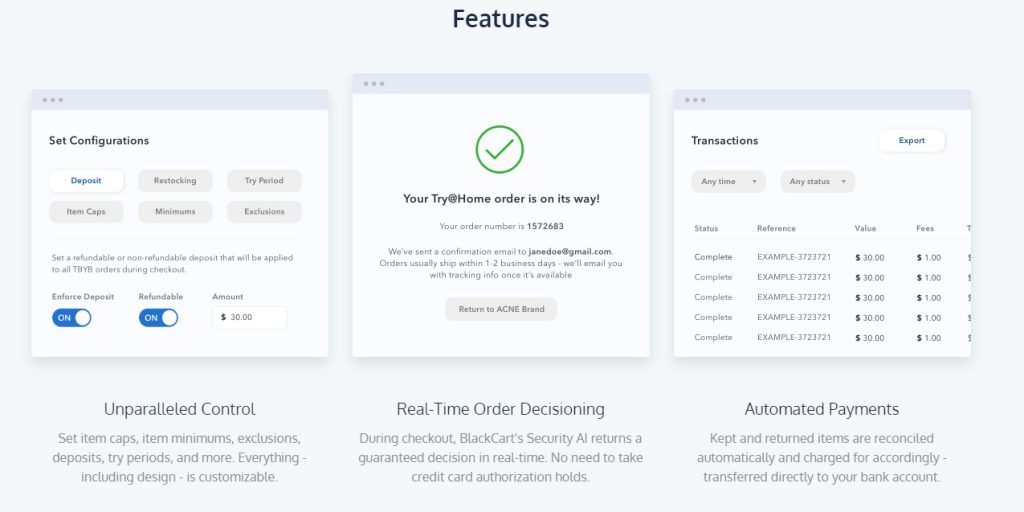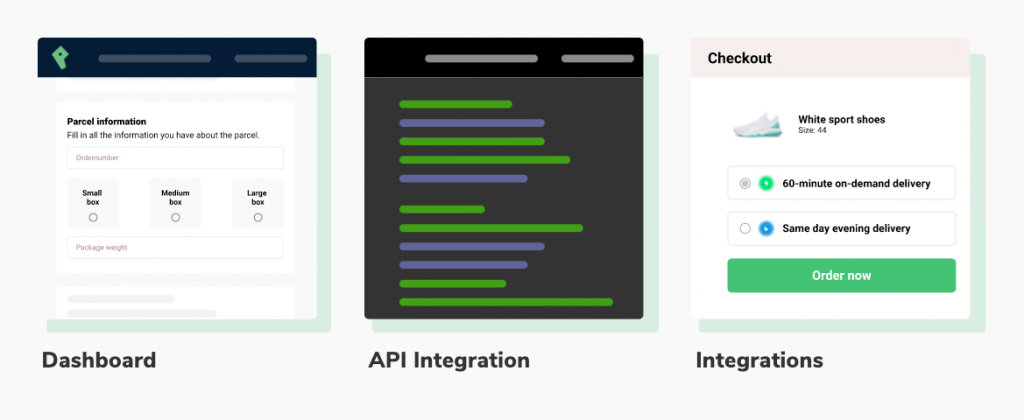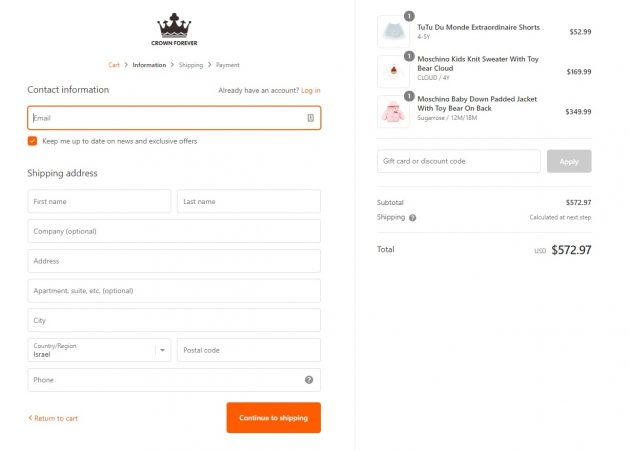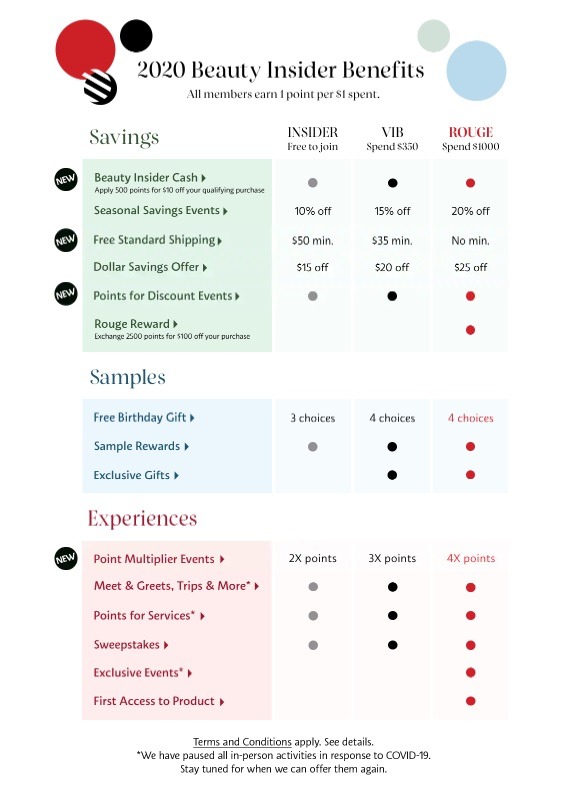Here’s the thing: without your customers, your eCommerce business is just a website with pretty product photos.
This is why developing, testing, and tweaking your customer experience should be top of your list for scaling your eCommerce business to peak revenue potential. In short, it’s the quality of the experience that a shopper has with your eCommerce brand, the key to how much they spend on your store, whether they return to your brand, and how loyal they become.
Therefore, your eCommerce customer experience can make or break your long-term business growth. In fact, it can ruin conversion rates entirely.
Why?
Because a poor, untested, non-innovative customer experience tarnishes every step of your shoppers’ buying journey. It dilutes brand trust in the awareness stage, creates confusion in the checkout stage, and builds frustration after the conversion stage.
Poor CX doesn’t just affect your conversion rates but hurts your repeat business and loyalty rates.
eCommerce Customer Experience (CX) vs. User Experience (UX)
Despite often being used interchangeably by business owners, these two crucial elements have fundamental differences. UX refers to how browsers engage with your web store and the experience they have with that engagement. In eCommerce terms, you may measure the effectiveness of UX by your abandoned cart rates and conversions or the count of how many actions/pages/interactions it takes to go from an initial store visit to a sale. In short, it’s the usability of your website.
CX, on the other hand, is all the interactions a shopper has with your online store brand – your eCommerce end-to-end customer interactions at every aspect of their journey, including post-conversion. In eCommerce terms, you may measure this by repeat customer rates and the likelihood that a shopper would recommend you to others – i.e., reviews. UX is part of your broader CX strategy. Therefore, your UX plays a role in your overall CX – which includes aspects beyond your website’s user experience.
[Source: Digital Gov]
In a nutshell: CX ensures that you are building a customer-centric experience throughout your site (UX) and at every point of your shoppers’ journey!
But it’s not all doom and gloom! With the right customer experience hacks and innovations, you can ensure you are connecting with your customers, increasing revenue and efficiency, and reducing overall cost.
Even the smallest of tweaks or hacks from a quick competitor analysis can improve your overall customer experience at every customer journey point and help you stay ahead of your closest competitors.
In this post, we will show you how to assess overall customer experience for your online store and give you 17 customer experience hacks and innovations to test and implement to build your million-dollar brand. These range from simple, inexpensive tweaks to more significant investments that could have huge payoffs for growing your online store brand.
Auditing Your Customer Experience in 6 Steps
Before testing and implementing new customer experience hacks and innovations to create a customer-centric eCommerce brand, you need to know where you stand. This is where a good customer experience audit comes into play.
You want to take a comprehensive look at how your target shopper interacts with and views your brand, looking at the touchpoints of a shopper’s journey – from when they first find a product, to when they buy from your brand, to post-purchase interactions. Here are the critical steps of auditing your customer experience to get you started.
- Review your digital metrics. You will want to start by getting a good understanding of your Google, PPC, email, and abandoned cart analytics.
- Look at your support metrics. Go through your support content and compile a list of the questions, concerns, or complaints that have been voiced most often.
- Ask your customers. Do interviews with key loyal shoppers and/or broader surveys to get feedback directly from the source on how they found your brand, how their journey was, what made them decide to buy from your brand, etc.
- Test your shopping flow in-house. Put yourself in your potential customers’ shoes by following your own ads and the entire journey a shopper takes past the point of conversion, reviewing all your automation – including emails – along the way.
- Map out your customer journey. Take all the metrics and observations from the above steps, map out your shopper journey, and identify both the key touchpoints that are working and those that need improvement.
- Divide your optimization into three key stages. You want to divide your customer experience into pre-purchase, purchase, and post-purchase stages. The pre-purchase phase is the first step of customer experience: the hooks. The purchase phase is where you engage with high-intent shoppers. The post-purchase phase is your last opportunity to engage with new customers and build brand loyalty.
Once you have the lay of the land, so to speak, let’s look at the top customer experience hacks and innovations you can test and implement – ranging from simple, quick hacks to innovations that require more budget and time but can be very effective.
Let’s dive in!
Customer Experience Hacks & Innovations For the Pre-Purchase Phase
1. Make Sure Your UX Foundation is Effective With a Store Layout and Design Review [Basic]
Your store’s UX is the first impression you make and ultimately kickstarts customer experience from every touchpoint. That’s why it is so important to start with a complete review of your overall store design. Here is a breakdown of the design element questions you should be asking about your store, which will point to tweaks you can make.
- Are you using good-quality lifestyle product photos?
- Is your design crowded or straightforward?
- Are your essential pages and contact details easy to find?
- Do your copy, color, layout, and font line up with your eCommerce brand identity?
- Is your store easy to navigate?
- Are your products, pages, and high-value information easy to find?
Bonus Content: The Online Store Feedback You’ve Been Waiting For
An excellent example of an eCommerce brand that makes a good first impression with their website design is Graze. From their bright lifestyle product pages that speak to their products and target audience, to their easy navigation, use of intelligent design for their how-it-works section, category page design, and banner CTA – they immediately draw potential shoppers’ attention.
You can get more inspiration from our Top Shopify Plus Store Examples and Why They Rock post!
2. Use Your CX Metrics to Turn Your Homepage into a Brand Hub [Intermediate]
Your homepage should be, in essence, a dashboard of your brand. As we know about the customer journey, it’s never a straight line from A to B. Shoppers may search for your brand on Google after seeing a Facebook ad or browse to your store from a product landing page; no matter how they get to it, a potential customer could visit your homepage multiple times on their journey.
This is why your store homepage shouldn’t just be a never-ending list of products but rather optimized for every stage of a buying journey, acting as a hub for your brand, so to speak.
In a nutshell, your store’s homepage should highlight key branding and products in the form of the main categories, best-selling products, return policy (and other important info pages), and UGC (such as reviews or social post shares).
You will also want to include a summary of how your product or product service works, if relevant. All done in a simple way that is easy to digest and navigate. A good example of a store to aspire to in terms of creating a homepage brand hub is Birchbox.
Ultimately, you will want to look at your metrics to decide what products to highlight where and test all your homepage elements. Here are some tips to help you turn your store’s homepage into a converting brand and product hub or dashboard.
- Make sure your homepage loads quickly
- Put your USP front and center
- Display best-selling products
- Include links to helpful pages such as shipping policies, T&Cs, and contact details
- Highlight your main product categories
- Put your most important information above the fold
- Personalize a potential shopper’s homepage experience as much as possible – but more on that later!
- Include a section for your latest high-value blog posts
- Showcase reviews, testimonials, and/or UGC
Pro Tip: By leveraging theme-based bucketing on your homepage, you can keep your above-the-fold promotions more relevant to your potential shopper. Theme-based bucketing is where you link product categories together to promote themed promotions.
An example of this would be grouping together Cyber Monday sales or having a holiday, baby shower, or Valentine’s Day gift section that can be clicked on your homepage, sending shoppers to a selection of products from various categories that would make good gifts.
3. Incorporate the Power of Augmented Reality [Expert]
AR technology offers your customers a powerful way to engage with your products. Used by many top eCommerce brands such as Paw.com to help streamline customer experience at the pre-purchase phase, it leads to better conversions and product trust. Augmented reality enables you to create a memorable and unique experience through better visualization while also keeping potential customers on your store for longer.
And thanks to technological advancements such as Shopify AR, AR has become more mainstream and available to eCommerce brands.
4. Invest in AI to Personalize Your Shoppers’ Experience [Intermediate]
Next on our list of top customer experience hacks and innovations for eCommerce is using AI to personalize your potential shoppers’ experience on your store. Personalization is a powerful tool for increasing your conversion rates while streamlining your CX, especially when you go beyond the usual personalized up- or cross-sell recommendations. Personalization can be based on demographics, browsing behavior, interests, seasons and weather, and more.
Here are the three ways you can use AI innovations to successfully engage potential customers and strengthen your customer experience.
Personalized Store Homepages
As you know, first impressions are vital and when it comes to your homepage, you sometimes only have seconds to draw a brand new shopper in. Creating a homepage hub as outlined in the previous hack can be effective; however, if you can make that hub more personalized, the results can be very lucrative.
This can be accomplished by showing different banners or best-selling products to different store visitors. It can be as simple as installing an app such as DataCue, which uses site cookies and your preferences to determine which types of shoppers see which content.
A good example of a brand that personalizes their homepage for specific shoppers is Boozt. Here are two homepages I was shown; the first – from my initial visit to my store; the second – from my later visit, after I had done some browsing.
As you can see, the first homepage is about driving category awareness to brand new site visitors, while the second pushes their latest (relevant) promotions.
Personalized Store Navigation
A perfect example of personalized navigation for a web store is a small brand you may have heard of – Amazon! Another is the eCommerce brand Asos. Based on my previous navigation selection, when I visit their online store, I am automatically navigated to their women’s category and presented with all the women’s subcategories.
Like with homepage personalization, store navigation personalization is based on cookie retargeting, enabling you to show potential shoppers products that are more relevant to their previous site behavior and interests. There are a variety of apps and tools, such as Barilliance, that will enable you to personalize your customer experience with minimal technical know-how.
Personalized Promotions, Coss-, and Up-selling
Another common way you can personalize your customer experience is with the types and timing of promotions you offer. This can be as simple as showing different product visuals for the same promotion, or as involved as creating specific promotions for specific traffic – similar to how you would segment your email marketing promotions.
If a customer has been looking at your $25-Ts, a general promotion on designer handbags is not going to land them. The idea of personalizing your promotions and suggesting products (through cross- and up-selling) is giving shoppers what they are looking for when they are actively looking for it.
Let’s say a shopper has visited your online store twice and searched your sports category. You wouldn’t want to bombard them with a promotion on one specific general category on their first visit, as this is when they are just getting to know your store brand and what you’re selling.
However, once they have shown interest in your store and specific categories, a well-timed promotional popup, homepage banner, or surprise cart discount for a product they are already very interested in buying could not only improve their shopping experience but increase your chances of making a sale.
In the last couple of years, thanks to app advancements like Bold Brain, it’s easier to offer product recommendations through AI and machine learning. Therefore, if you’ll excuse the pun, it should be a no-brainer to invest in AI personalization if you want to build a million-dollar brand.
Bonus Personalization Tip: Don’t forget to test exit-intent popups! The last customer experience hack you will want to test in the awareness or pre-purchase phase is exit-intent popups. Practical tools like StoreYa’s Exit Popup will use targeting rules enabling you to offer exclusive deals to customers based on their shopping behavior.
5. Jump onto the Voice-Assisted Shopping Bandwagon [Expert]
Voice-assisted shopping popularity is growing, and eCommerce brands not capitalizing on this opportunity to drive customer experience are being left behind. Voice-assisted shopping is fast and seamless and helps you get your products on growing voice shopping platforms like Alexa, Siri, or Google Assistant, improving your brand’s shopping experience. The easiest way to get your brand on voice-assisted shopping is with a product like VoiceFront.
6. Take Product Sizing to New Levels [Intermediate]
As we know, size guides play a crucial role in helping potential customers choose a product from your store as well as ensure they are happy with it when it arrives. This is particularly important for apparel. In fact, size and fit are a big issue when it comes to customer experience during the purchase and post-purchase phases.
One of the biggest concerns potential shoppers have when buying from a new apparel eCommerce store is whether an item will fit them well. Therefore, although your traditional size guide helps mitigate this, upgrading your store to include interactive, creative, and/or functional online sizing guides can help you rise above your closest competitors, improve your CX, and improve return rates.
Let’s look at some top eCommerce brands for inspiration that take their product sizing to pro level.
Nudie Jeans is a Swedish denim brand that displays simple size measurements as well as offering a virtual sizing guide.
If you want to go interactive with your sizing guide, tools like Fit Analytics can help you upgrade your store to include an intuitive size advisor.
If you are looking for a more simple yet practical approach, Shopify store Luna Sandals is a good example. They offer a printable size guide that shoppers can use to measure their feet and make sure the measurements line up with the sandals.
7. Incorporate Facebook and Instagram Shopping Options
You can also make your brand’s shopping journey easier for both potential customers and regular shoppers by ensuring your products appear on platforms where they are. That’s where Shops for Facebook and Instagram can be very effective.
With recent advances such as Facebook partnering with Shopify to make shops completely branded, these new channels allow you to take your brand and customer experience to platforms outside of your online store with easy catalog integration.
Although still rolling out and may take a month to reach your region, if you have already set up product tags for Instagram you will automatically get access to Facebook Shops. You can read more about the rollout here.
Instagram Shop is already up and running and proving to be a big conversion driver. You can find out more about Instagram shopping in our 7 Steps to Becoming an Instagram Selling Machine post.
Bonus Content: Instagram Tools: The Ultimate List For Business & Growth
Customer Experience Hacks & Innovations For the Purchase Phase
Next, let’s look at the customer experience hacks and innovations to implement with potential shoppers who not only already know your brand, but are actively deciding about buying from you.
8. Raise Your Customer Support Level with Live Chat Bots [Intermediate]
If you still haven’t added 24/7 live chat support, you are way behind the customer experience curve. Live chat ensures customers can get answers in real-time, streamlining their shopping journey while improving your conversion rates.
However, combining online chat with shopping bots for eCommerce can be particularly powerful for offering real-time solutions and promotions to push sales. These include Shopify Messenger, which provides a full shopping experience through Facebook Messenger, or Tidio Live Chat for real-time customer engagement and eCommerce bots.
Bonus Content: 9 Merchant Chatbots on Facebook Messenger to Inspire You
9. Take Personalization from Your Store to Your Email Marketing [Basic]
Automated, personalized email remarketing campaigns can help turn potential shoppers into converted customers by giving them what they are looking for when they are looking for it and making the whole experience as streamlined as possible. The trick is creating highly relevant emails for smaller shopper segments, sending them to the right landing and product pages.
Let’s say you want to run a promotion for outdoor wear products in your store. If you send it to your entire email remarketing list without segmentation, you’re unlikely to meet your ROAS goals.
However, send that promotion to repeat site visitors who have shown interest in outdoor products or repeat customers who have bought outdoor clothing from you before, and chances of meeting your ROAS will be high. Why? Because you are offering deals on products they are actively looking for or want, and improving the customer experience with a highly relevant promotion.
Pro Tip: The same approach can be applied to your Facebook and Google remarketing campaigns. Sending highly specific promotions to searchers, tailored to their product searches doesn’t just help bring back traffic and boost conversions, but helps with customer experience by putting the product they are actively looking for front and center. Visit our 11 RLSA Strategies to Drive Conversions post for these and other expert Google remarketing strategies.
Here are some important blog posts that will help you upgrade your email marketing and ensure it is working as part of your overall customer experience strategy:
- Top 4 Things That are Killing Your Email Marketing and How to Fix It
- A Full Guide to Email Marketing Platforms
- 9 Winning eCommerce Email Campaigns You Should Borrow Today!
- Monitor These 5 Email Marketing Metrics for Sales Success
10. Test Try-Before-You-Buy Strategies
A growing trend in eCommerce is the try-before-you-buy option. Here, you remove payment friction at checkout by allowing potential shoppers to get to know and love your product before forking out any money. It is important to note here that because try-before-you-buy strategies won’t work for every brand or niche, you need to A/B test this thoroughly before integrating it into your customer experience strategy.
You will also need to have the infrastructure in place for offering such a service, as it will likely come with a vast wave of returns that will need to be professionally handled.
Some leading eCommerce brands using try-before-you-buy are Casper (mattresses), Stitchfix (apparel), and Warby Parker (eyeglass frames).
As try-before-you-buy popularity increases, so do developments in technologies that support these options. Two leading technology services that enable you to offer try-before-you-buy options are Klarna and BlackCart.
11. Get Serious About Your Delivery Options [Basic]
Another customer experience innovation involves your delivery options. Thanks to Amazon culture, online shoppers want their products delivered as quickly as possible. Yes, free shipping can help convert new shoppers.
However, many shoppers are willing to upgrade to a paid delivery option if it means they can get the product quicker. This need for quicker delivery options is driving new technology in a big way.
One example is the on-demand delivery app Packaly, which allows customers to choose a 60-minute delivery option using bike messengers – putting a big focus on reduced carbon footprint. Another example is the Click and Collect Shopify app, which enables you to offer pickup options.
Of course, these would only be worth testing with markets in and around your production or storage locations and wouldn’t work for a print-on-demand product store.
If you’re looking for city-to-city or global customer-centric delivery options, it’s best to stick to apps and services such as ShipStation and enable your customers to choose an upgraded delivery option that balances their need for speed with their budget. You can read more about available services in our Extensive List of Fulfillment Companies and Services for eCommerce post.
12. Streamline Your Checkout [Intermediate]
There is nothing more frustrating to a potential customer than a clumsy checkout flow or the sudden reveal of hidden costs – both of which can tarnish the entire customer journey and result in lost conversions. Streamlining and optimizing your checkout should include:
- Design and layout checkout optimization, with easy guest checkout options, trust badges, preferred payment options, and visual displays of where a customer is in the checkout process.
- Cart hacks to improve checkout optimization, such as product image displays, transparent costs, upselling strategies, and highlights of the benefits of buying your products.
- Overall shopping experience innovations that help streamline the checkout process, such as cart viewing, product ratings and reviews, and harnessing the power of video.
You can read about these hacks in detail in our 26 Cart and Checkout Optimization Hacks to Boost eCommerce Sales post!
Customer Experience Hacks & Innovations For the Post-Purchase Phase
If you want to build a successful long-term business, your customer experience doesn’t end when a customer clicks the checkout button. It includes seamless communication and support until they get their product, and after-sale strategies and rewards that build loyalty and improve repeat customer rates.
13. Invest in a Creative Thank You Page [Basic]
Don’t forget your Thank You page! It may seem like a basic customer experience hack, but it’s an important one. It’s the perfect place to start when mapping your post-purchase customer journey – it’s where you need to set the tone for the delivery process, strengthen your brand impression, and/or upsell.
A good Thank You page should:
- Be on-brand in terms of voice and identity while being as creative as possible
- Include a CTA above the fold
- Be enthusiastic and positive
- Include social share options, a promotional offer, survey link, or any other hook that allows you to engage with your new customer
To give you an idea of how much creative room you have in your Thank You page, here’s a video that Halloween Costumes includes on theirs!
What you don’t want to do is cram too much content into your Thank You page, over-promise anything – which would, of course, have the opposite effect – or get lazy with your design. You can read more about this in our 6 Great Examples For eCommerce Thank You Pages post.
14. Upgrade Your Communication [Basic]
The next key element in your customer experience journey is your after-sale communication. At the bare minimum, this should include a confirmation and delivery/shipping updates to keep your customer informed about where their product is and whether delivery is proceeding as promised. The trick with these automatic emails is to ensure they don’t come off as too generic, as this can hurt your brand’s overall impression before you’ve even started. Here are two examples of a good eCommerce purchase confirmation email from Zalando, using Omnisend.
Bonus Content: 7 Ways to Win Over Customers Through a Welcome Email Series
15. Create a Unique Unboxing Experience [Intermediate]
Another way you can kick your customer experience into fifth gear is with your unboxing experience. This is your last chance to engage directly with a new customer on an almost one-on-one basis. To really make an impression, you need your unboxing experience to be on-brand, impactful, and shareable. Simply put, it should leave an impression that surpasses any old standard delivery expectation and have a small element of surprise.
This doesn’t mean you have to lay out huge budgets on fancy packaging; one of my favorite online shopping experiences is a bookmark included in every book order from Book Depository, who keep designs fresh. Their packing isn’t overly exciting, but they have gone with good-quality choices that ensure every book arrives in tip-top condition. For more on their unboxing strategy and others you can copy, head over to our full Expert Unboxing Strategies Guide.
16. Be Strategic with After-Sale Feedback and Review Mining [Intermediate]
As mentioned at the beginning of the post, getting feedback and reviews from your customers is essential for tweaking and improving your eCommerce customer experience. However, with a little creativity, you can use these to boost their overall experience and your sales. Here are some ideas to get your creative juices flowing:
- Find ways to use your copy and presentation to show you care
- Include product care tips and how-to guides
- Add information and links to VIP and loyalty programs
- Offer rewards for reviews or surveys
- Keep feedback requests (and surveys) short and to the point
- Include below-the-fold up- or cross-sell product options
17. Reward Loyalty [Intermediate]
Building customer loyalty and pushing repeat business is the last piece of your customer experience puzzle. And like with every aspect of your eCommerce marketing strategy, the more personalized you make it, the better.
This can be as simple, yet effective, as sending a purchase anniversary email or birthday remarketing campaign with a strategic product suggestion or personalized promotion. Or as involved as sending customized SMS deals to your most loyal customers.
An excellent example of a brand that offers personalized loyalty rewards is Sephora’s Beauty Insider Program. Offering various options for multiple events and points means customers can customize their rewards to their preferences. This creates a good eCommerce experience post-sale (with the invite) and pre-purchase(by converting previous shoppers and keeping them engaged).
Final Thoughts: Test Everything
There you have it, 17 customer experience hacks and customer-centric innovations you can use to take your eCommerce brand to the next growth level. However, when it comes to implementing any of these new hacks, you want to ensure that you test everything first so that you can tweak and adapt your customer journey to fit your specific brand, niche, and target shopper. It is also something you will want to assess, tweak, and upgrade often to scale your business to million-dollar revenue levels.

Nicole is a content writer at StoreYa with over sixteen years experience and flair for storytelling. She runs on a healthy dose of caffeine and enthusiasm. When she's not researching the next content trend or creating informative small business content, she's an avid beachgoer, coffee shop junkie and hangs out on LinkedIn.
Recommended articles
 Facebook Ads for eCommerce: 16 Strategies, Examples & Tips
Facebook Ads for eCommerce: 16 Strategies, Examples & Tips
 How to Build a Winning eCommerce Ads Strategy
How to Build a Winning eCommerce Ads Strategy
 Google Ads for eCommerce: Everything You Need to Know
Google Ads for eCommerce: Everything You Need to Know
 10X Your Traffic with PPC Management Software
10X Your Traffic with PPC Management Software
Comments
Powered by Facebook Comments

